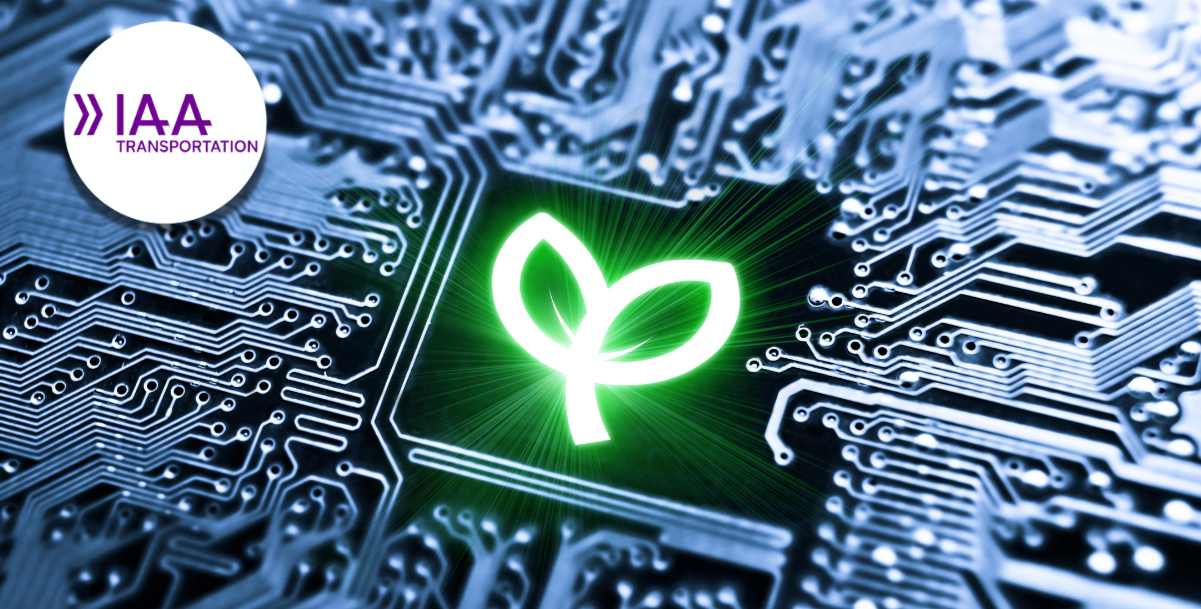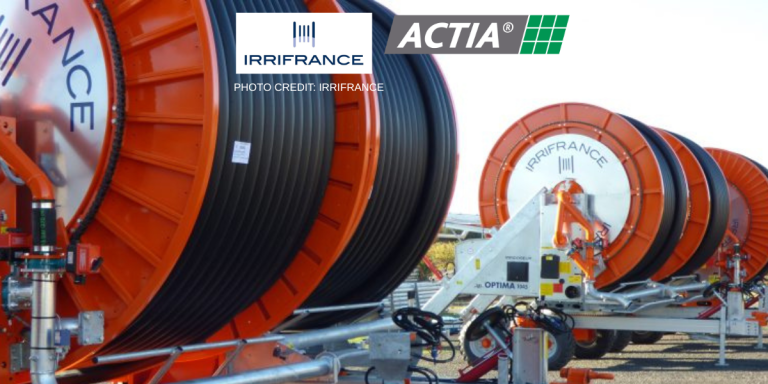ACTIA’s experts led a conference at the IAA Transportation 2024 trade show on an issue central to the future of mobility: How on-board electronics can help original equipment manufacturers (OEMs) meet their sustainability commitments by reducing their carbon footprint. At a time when new environmental regulations are becoming increasingly stringent, this discussion highlighted the key role of electronics in the transition to more environmentally friendly vehicles. Here is a transcript of the discussions.
Regulatory context
New laws on CO2 emissions
In April 2024, the European Parliament passed a new law on CO2 emissions from heavy-duty vehicles, stipulating that virtually all new lorries sold between now and 2040 must be zero-emission. This law also requires gradual reductions in CO2 emissions from 2030 for lorries, and from 2035 for certain categories of special-purpose vehicles.
ACTIA’s commitment to sustainability
Against this backdrop, ACTIA, with its 40 years of experience in on-board electronics, showed how its solutions help make vehicles become more sustainable, safer and more efficient while meeting regulatory requirements.
Since it was founded in 1986, ACTIA has been designing and manufacturing cutting-edge electronic solutions for demanding sectors such as mobility, aeronautics, space and energy, with the aim of contributing to a more sustainable world. This conference highlighted how electronic technologies, particularly those developed by ACTIA, can help OEMs meet the challenges of sustainability through three key areas:
- the role of electronics in the sustainability of vehicles,
- the analysis of their carbon footprint throughout their life cycle,
- and the eco-design levers put in place by ACTIA.
On-board electronics as a sustainability enabler
A central role in the transition towards more sustainable vehicles
On-board electronics play a central role in the transition towards more sustainable vehicles. Since the 1980s, with the introduction of the first electronic engine control systems (engine control units), these technologies have made it possible to diagnose and monitor the correct functioning of engines, especially for controlling pollutant emissions.
Environmental regulations and standards
The first regulations for on-board diagnostics were introduced in California in 1985, requiring on-board electronics to monitor compliance with pollutant emission thresholds. ACTIA specialises in on-board electronic systems and electronic diagnostics, thus helping to reduce vehicle emissions.
Compliance with Euro standards
In Europe, Euro standards (from Euro 0 to Euro 6, with the introduction of Euro 7 scheduled for 2025) have imposed increasingly stringent limits on pollutant emissions from heavy-duty vehicles, reinforcing the importance of on-board electronics in meeting these standards.
Contributing to safety and predictive maintenance
However, the contribution of electronics to sustainability is not limited to reducing pollutants. It also includes vehicle safety and predictive maintenance. On-board electronic systems enable predictive maintenance by identifying potential malfunctions in real time while vehicles are being used.
Optimised performance and energy efficiency
Through continuous monitoring, data analysis and maintenance cycle optimisation, these systems improve the lifetime of equipment, increase vehicle service rates and improve overall performance, in particular by reducing fuel consumption and increasing energy efficiency. As a pioneer in the field, ACTIA continues to play a major role in the development of electronic solutions that make vehicles safer and more sustainable.
From analysis of the carbon impact of a circuit board to eco-design
For ACTIA, it is essential not to limit ourselves to the benefits of the functionalities of on-board electronics, but also to tackle the reduction of the carbon footprint of their electronic products. A rigorous approach to analyzing the CO2 impact throughout the life cycle of an on-board electronic card is essential to identify levers for action.
CO2 emissions by vehicle type
It should be noted that the weight in CO2 of an electronic card for an electric vehicle is 119.7 kg and for a thermal vehicle 1268.6 kg. Although the industry is moving towards an increase in the share of electric vehicles, forecasts indicate that by 2030, only 50% of trucks on the market will be electric. It is therefore imperative for ACTIA to support its manufacturer customers regardless of the nature of their vehicles, by implementing eco-design practices.
“We analyzed the carbon impact of one of our embedded electronic cards throughout the life cycle of a vehicle. It appears that each stage plays a specific role in CO₂ emissions: from design to raw materials, including manufacturing, transport, use and end of life. However, we observe that the most significant part of the carbon footprint is concentrated on raw materials and vehicle use. The carbon impact of the use stage of an embedded card in an electric vehicle represents 41%, compared to 55% of the impact for raw materials. But the carbon impact of a card for a thermal vehicle is even greater: the use stage represents 95% of the total impact, compared to 5% for the other phases.”
Describes Jean-François CALMELS, Board & Executive Commitee Member in charge of Sustainability.
“Living” electronics
Electronics can thus be seen as “living” because they constantly consume energy when they operate. During its use, it generates heat in particular due to the Joule effect (when electricity passes through a conductive material, part of the energy dissipates in the form of heat). Other effects related to electronics, such as energy losses in the circuits or auxiliary systems necessary for its operation, contribute to increasing overall energy consumption. This indirectly increases the carbon footprint, especially in the case of thermal vehicles, where increased energy consumption means greater fuel combustion and therefore additional CO₂ emissions.
This analysis underlines ACTIA’s commitment to identifying levers for improvement in the design of embedded systems, in order to reduce the environmental footprint of its products through a rigorous and sustainable approach.
“Our goal is to make electronics more sustainable in partnership with manufacturers, with an eco-responsible approach and our ACTIA EcoMatrix tool. We have conducted this same type of reflection with our customers on the subjects of cybersecurity, operational safety and even during the component supply crisis. Today, we need to focus on the design and carbon footprint of our systems right from the design stage of the vehicles.”
Explains Jean-François CALMELS.
ACTIA EcoMatrix: towards an action-oriented eco-design approach
The ACTIA EcoMatrix service
In response to these challenges, ACTIA has developed the ACTIA EcoMatrix service, which assesses a product’s environmental footprint, particularly its carbon impact, and performs a critical analysis to determine priorities and alternatives. The ACTIA EcoMatrix service is designed to provide concrete, action-oriented alternatives for reducing a product’s environmental footprint.
Main action levers for sustainability
The main levers identified by ACTIA to reduce the CO2 impact of a circuit board include:
- choosing green suppliers committed to reducing their own carbon footprint,
- selecting components and materials with the best LCA (Life Cycle Assessment) ratio in terms of CO2 impact,
- and designing boards that consume as little energy as possible, while incorporating a component sustainability and obsolescence management approach to prevent shortages.
These initiatives show that the environmental impact of an electronic product is largely determined upstream, starting in the design phase, which fully justifies the eco-design support ACTIA offers its customers.
Electronics is a constantly evolving field, and it is crucial for ACTIA to work alongside its OEM customers to move forward together towards more sustainable solutions. All joint eco-design initiatives enable us to make progress together. Collaboration and partnership with our OEM customers are key to achieving our shared sustainability objectives and reducing our overall carbon footprint.
Visit public transport website Contact our Public Transport experts





